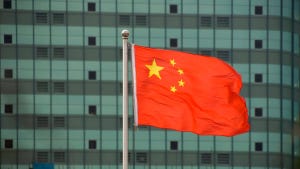The company's debut earnings announcement focused on the company's revenue pipeline, as opposed to reported results

Executives at Infinera Corp. (Nasdaq: INFN) used their debut earnings call to preach the benefits of measuring "invoiced shipments," instead of revenues, when looking at the company.
The company reported net losses of $26.1 million, or $1.10 per share, on revenues of $58.4 million in the second quarter. That compares with losses of $19.8 million, or $2.62 per share, on revenues of $49.2 million the previous quarter. (See Infinera Reports Q2.)
For its second quarter in 2006, Infinera incurred losses of $18.2 million, or $3.23 per share, on revenues of $4.1 million, according to its SEC filings.
On a pro forma basis, Infinera beat analysts' expectations. It reported a pro forma profit of 4 cents a share. Analysts were expecting a pro forma loss of 11 cents per share, according to Reuters Research .
"Invoiced shipments," which Infinera describes as the revenues it really collected during the quarter, were $69 million, outpacing analysts' expectations of $61.4 million. The trick is that Infinera spreads the revenues of each sale across multiple quarters. So its GAAP revenue number will usually be lower than its "invoiced shipments" -- and that gives analysts an idea of what's to come in the months ahead.
Alongside its earnings, Infinera reported a contract with Cox Communications Inc. to build a nationwide transport network. That's a job separate from some metro DWDM work Infinera said it had previously won with Cox. (See Cox Picks Infinera.)
But despite having grabbed Cox along with some 30 other customers, Infinera so far has taken in the most money from Level 3 Communications Inc. (NYSE: LVLT), one of its investors. And its invoiced shipments, while steady, haven't yet grown past the $70.5 million reported in the fourth quarter of 2006.
For its third quarter, which ends in September, Infinera says it expects invoiced shipments of $68 million to $72 million. Analysts were expecting $64.1 million.
That quarter will include some new deployments, Infinera expects, some of which might not get invoiced until the fourth quarter. Included in the deployment mix will be some metro wins for the 19-inch chassis that Infinera announced in June. (See Infinera Spews News.) All told, Infinera thinks it will report a per share loss of between 0 and 2 cents.
Shares of Infinera rose $1.20 (5.3%) to $24.00 in early after-hours trading.
— Craig Matsumoto, West Coast Editor, Light Reading
About the Author(s)
You May Also Like











